Published 22 June 2020 ● Last Updated on 20 August 2020
As the world learns to live with Coronavirus (it is here to stay for a while!) and settles into the ‘new normal’, the past few months have brought a few serious issues to the forefront and they need to be addressed urgently for a secure future. One of these issues is food security.
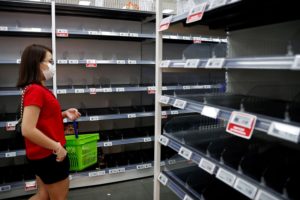
Images like these flooded social media a few months back – not only in Singapore but in many other parts of the world as well. In times of crisis, the unavailability of basic food items adds to the common man’s woes and is often the cause of the vicious cycle of panic buying. It is vital that governments and related organisations have policies in place to ensure a sufficient and steady supply of basic necessities to tide over difficult times. Individuals have a role to play too, a big one!
But first, what is food security?
Food security is a concept that stands on 3 pillars – availability, affordability and quality. As defined by the United Nations – it exists “when all people, at all times, have physical and economic access to sufficient, safe and nutritious food that meets their dietary needs and food preferences for an active and healthy life”. (World Food Summit, 1996)
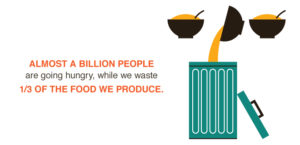
The reality on the ground doesn’t reach this ideal. Malnutrition is a world health crisis that has been plaguing our society for a long time and even today, a billion people go hungry. It is no surprise that among the 17 UN Sustainable Development Goals established to help people and the planet, now and into the future, two are directly related to food (goals 2 and 12) plus others that are indirectly linked to it.
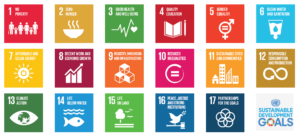
Food security in Singapore: The current scenario
Given Singapore’s growing population of 5.8 million and limited (is)land area of just over 700 sq km, you may wonder where does Singapore get its food from? Here’s how:
1. Import
Over 90% of all the food in Singapore is imported from over 170 countries. This heavy dependence on food from other nations has its own challenges – the quality of food being sourced, regular supply, shortage of food, price hikes and complete shutdown. The Singapore Food Agency is focusing on new strategies and policies to ensure a steady, uninterrupted supply of food in Singapore.
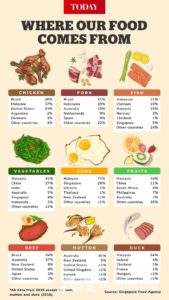
2. Local Produce
Less than 10% of food consumed by Singaporeans is produced locally. While the unavailability of land is probably one of the major reasons for it, it is pertinent that SG gets creative when it comes to cultivating and growing on home territory– such as vertical farms, hydroponic produce and even urban farms on top of car parks!
3. Contract Farming
To get around the problem of land scarcity, Singapore has taken the novel approach of leasing farmlands in other countries with the express goal of making Singapore the first and preferred buyer of the farm’s produce. The host country enjoys the returns of investment. Plus, in return of the privilege of being the first buyer, the contract may include elements of tech and know-how sharing.
The Sino Singapore Jilin Food Zone, the first agricultural collaboration between Singapore and China, is an example of this. The advantage this has over imports is that it allows SG to have control of the food quality right at the source – clean water, rich soil and disease free. You can enjoy this harvest of Jilin-grown rice (marketed as Brilliance 43N and available at NTUC Fairprice).
30 by 30: Ensuring food security in SG
Where do our current food policies leave us? As per the Global Food Security Index designed by the Economist Intelligence unit, Singapore is among the most food secure countries in the world – it topped the charts in 2018 and 2019.
But that’s just the tip of the iceberg. Threats such as climate change, reliance on imports and other factors mean that we are vulnerable to disruptions. Well aware of such external vulnerabilities, the Singapore Government has been focusing on strategies to make Singapore more food secure from the past few years . A culmination of this is 30 by 30 which was officially announced in March 2019 – it sets a goal that 30% of Singapore’s nutritional needs will be produced locally by 2030.
This vision is to be enabled partly by investment in agri-technology – think vegetables, salad leaves and herbs grown in climate-controlled vertical farms using LED lighting to maximise yields, and fish farmed at sea in contained systems to shield them against toxic algae blooms and oil spills. Using tech for farming in this manner is expected to drive up productivity by 10 to 15 times. SG$144 million has been set aside for food related research under Singapore Government’s Research, Innovation and Enterprise 2020 plan- locally grown lab meat is soon going to be a reality, folks!
In early February, the government launched the Singapore Food Story Campaign to encourage citizens to buy local produce. In April 2020, the Singapore Food Agency and the Ministry of Environment and Water resource further announced a $30 million grant to help local farms increase their production over the next 6 to 24 months. Termed as the 30×30 Express grant, projects applying for it need to meet the requirements of high production, high productivity and short project duration. Also, it is for farms producing eggs, leafy vegetables and fish – products that are consumed in high quantities in Singapore.
Citizen Action: Top 5 things to do to help achieve food security in Singapore
Systemic action is a foundation – and we can build on top of that. Here’s what we as citizens and consumers can do to make policies a success.
1. Grow your own Greens (GYOG)
It is a myth that one needs to have a large garden space to be able to grow edible produce for personal use. Urban farming is the future and none better than a Singaporean to know that! Set up your own kitchen gardens and enjoy fresh produce from ‘balcony farms to table’. Depending on your level of enthusiasm and gardening abilities, you can grow herbs, microgreens, vegetables and fruits as well! Not sure how or where to start? We suggest you check out Edible Garden City’s Pantry Planting series or Bollywood Adventures Gardening 101 on Instagram.
Looking for freebies and instructions? As part of Gardening with Edibles initiative, National Parks board running concurrent programs for those keen to join the home gardeners bandwagon. Check this page to know the latest initiatives from NParks.
2. Buy Local Produce
Buying food products that are locally grown or harvested has multiple benefits – it is fresh, safe and nutritious, has a much lower carbon ‘foodprint’ as transportation process is short, encourages local farmers to boost their production to meet the demand and most importantly, reduces the country’s dependency on import.
We at Secondsguru are fierce supporters of the #GoLocal movement and have been sharing information on how one can support local enterprises on our SG FB page right through the Covid- 19 circuit breaker. If you are looking to buy locally grown produce and foods #madeinSingapore, here is the line-up –
Sustainable Singapore| A guide to buying foods grown and produced in SG
Here’s a sneak peek into our favourite picks: fruits and vegetables from Quan Fa Organic Farm, Comcrop, Citizen Farm, Bollywood Veggies, Fireflies Health Farm, VertiVegies or Citiponics; for Fish farmed in Singapore you have Eco Ark , The Fish Farmer and Barramundi Asia; the latter operates the largest full “farm-to-fork” set-up in the sea off the southern tip of Singapore. Keen to try it? Head over to The Kuhlbarra Shop , to buy frozen or fresh. Delivery is free for orders over SG$80. Look for locally produced eggs under the Singapore Quality Egg scheme.
3. Reduce Food Waste
For a country that imports 90% of its food products, it is alarming to see how much we throw! In 2019 Singapore generated 744,000 tonnes of food waste out of which only 18% was recycled. It is the 2nd heaviest item in the incinerator plants in Singapore! Hence, it is important that food wastage is reduced in a systematic way – at home, let’s cook only as much as needed, embrace ‘ugly foods’ and manage food waste better. Read this article to learn how you can help combat food wastage.
The National Environment Agency has set up a Food Waste Fund to cover the capital costs of food waste treatment solutions for organisations, capped at $100,000 per applicant. This is to encourage recycling food waste in a more effective manner and putting it to better use than just being dumped.
There are even apps like WasteWatch, Lumitics and Winnow that help in cutting down food wastage in the kitchen.

4. Diversify your food choices
You probably know this – what we eat has an impact on climate change. A study by Deloitte, Temasek and Singapore Institute of Manufacturing Technology in October 2019 estimated that for every 367 kg of food consumed per capita annually in Singapore, nearly 954 kg CO2 GHG emissions occur. Of all food categories, it is meat that is most resource intensive – it is responsible for about 15% of all global greenhouse gas emissions.
By simply replacing 50% of current red meats demand to plant-based meats we can reduce greenhouse gas emissions by 26%. This reduction will hold despite population growth, if we can indeed meet 30by30 goal!
So go ahead – diversify the food on your plate by opting for more plant choices and more local producers.
5. Donate Excess Food to Charities
Last but not the least, choose to donate food that is extra to charities – whether you are an individual, an office or in the hospitality business. Organisations such as The Food Bank, Food from the Heart SG, SG Food Rescue and Willing Hearts are happy to receive food donations as it helps them feed those who need it the most. On your part, you play a role in addressing food security for those who face the most insecurity. Do ask before you donate though so that donations can be matched appropriately. You can also take a look at the NEA guidelines when it comes to food donations here.
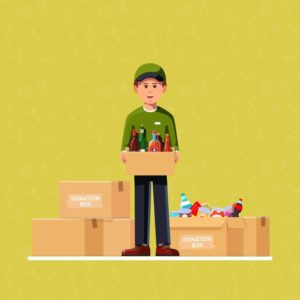
Food Security in Singapore: A combined effort
There is a lot that needs to be done in the coming years to help Singapore become more self reliant on food matters. The Government and related organisations are working towards it but it is equally important that individuals lend a helping hand. A combined effort on all fronts will help Singapore achieve its 30 by 30 goal.
Related Articles:
Sustainable Singapore| A guide to buying foods grown and produced in SG
Food waste | The Singapore story and what you can do to help reduce it!


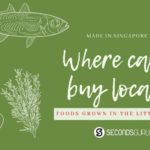
0 Comments